Related Research Articles
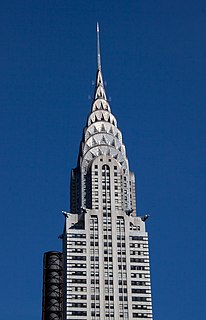
Art Deco, sometimes referred to as Deco, is a style of visual arts, architecture and design that first appeared in France just before World War I. It influenced the design of buildings, furniture, jewellery, fashion, cars, cinemas, trains, ocean liners, and everyday objects such as radios and vacuum cleaners. It took its name, short for Arts Décoratifs, from the Exposition internationale des arts décoratifs et industriels modernes held in Paris in 1925.

Jean-Édouard Vuillard was a French painter, decorative artist and printmaker. From 1891 through 1900, he was a prominent member of the Nabis, making paintings which assembled areas of pure color, and interior scenes, influenced by Japanese prints, where the subjects were blended into colors and patterns. He also was a decorative artist, painting theater sets, panels for interior decoration, and designing plates and stained glass. After 1900, when the Nabis broke up, he adopted a more realistic style, painting landscapes and interiors with lavish detail and vivid colors. In the 1920s and 1930s he painted portraits of prominent figures in French industry and the arts in their familiar settings.

Henry Clemens van de Velde was a Belgian painter, architect, interior designer, and art theorist. Together with Victor Horta and Paul Hankar, he is considered one of the founders of Art Nouveau in Belgium. He worked in Paris with Samuel Bing, the founder of the first gallery of Art Nouveau in Paris. Van de Velde spent the most important part of his career in Germany and became a major figure in the German Jugendstil. He had a decisive influence on German architecture and design at the beginning of the 20th century.
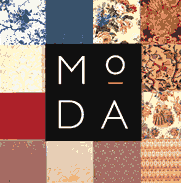
The Museum of Domestic Design and Architecture (MoDA) is a museum in North London, England, housing one of the most comprehensive collections of 19th- and 20th-century decorative arts for the home. The collection is designated as being of outstanding international value by Arts Council England.

The Silver Studio was one of the most influential textile design studios in the UK from its formation in 1880 until the middle of the twentieth century.

Morris, Marshall, Faulkner & Co. (1861–1875) was a furnishings and decorative arts manufacturer and retailer founded by the artist and designer William Morris with friends from the Pre-Raphaelites. With its successor Morris & Co. (1875–1940) the firm's medieval-inspired aesthetic and respect for hand-craftsmanship and traditional textile arts had a profound influence on the decoration of churches and houses into the early 20th century.
Olga Lehmann was a Chilean-born British visual artist.
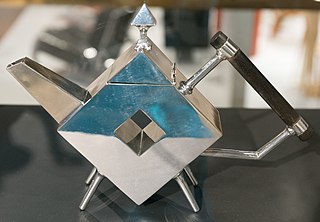
The Anglo-Japanese style developed in the United Kingdom through the Victorian period and early Edwardian period from approximately 1851 to the 1910s, when a new appreciation for Japanese design and culture influenced how designers and craftspeople made British art, especially the decorative arts and architecture of England, covering a vast array of art objects including ceramics, furniture and interior design. Important centres for design included London and Glasgow.
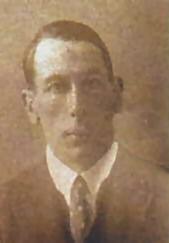
Charles André Mare (1885–1932), or André-Charles Mare, was a French painter and textile designer, and co-founder of the Company of French Art in 1919. He was a designer of colorful textiles, and was one of the founders of the Art Deco movement.

Désirée Lucienne Lisbeth Dulcie Day OBE RDI FCSD was one of the most influential British textile designers of the 1950s and 1960s. Day drew on inspiration from other arts to develop a new style of abstract pattern-making in post-war British textiles, known as ‘Contemporary’ design. She was also active in other fields, such as wallpapers, ceramics and carpets.
Angus Hyland is a British graphic designer and visual artist.
Percy Frederick Horton MA, RBA, ARCA was an English painter and art teacher, and Ruskin Master of Drawing, University of Oxford from 1949 to 1964. During the First World War he was imprisoned as a conscientious objector.
George Martin Battersby was a British trompe-l'œil artist and theatrical set decorator who became an expert on Art Nouveau and the style of the 1920s and 1930s.

Ann Agee is an American visual artist whose practice centers on ceramic figurines, objects and installations, hand-painted wallpaper drawings, and sprawling exhibitions that merge installation art, domestic environment and showroom. Her art celebrates everyday objects and experiences, decorative and utilitarian arts, and the dignity of work and craftsmanship, engaging issues involving gender, labor and fine art with a subversive, feminist stance. Agee's work fits within a multi-decade shift in American art in which ceramics and considerations of craft and domestic life rose from relegation to second-class status to recognition as "serious" art. She first received critical attention in the influential and divisive "Bad Girls" exhibition, curated by Marcia Tucker at the New Museum in 1994, where she installed a functional, handmade ceramic bathroom, rendered in the classic blue-and-white style of Delftware. Art in America critic Lilly Wei describes Agee's later work as "the mischievous, wonderfully misbegotten offspring of sculpture, painting, objet d'art, and kitschy souvenir."
Marion Victoria Dorn also known as Marion Dorn Kauffer was a textile designer primarily in the form of wall hangings, carpeting and rugs, however she is also known to have produced wallpaper, graphics, and illustrations. Known for her significant contributions to modern British interiors in particular for her 'sculpted' carpets, she contributed to some of the best-known interiors of the time including the Savoy Hotel, Claridges, the Orion and the Queen Mary. In the late 1930s and early 1940s she created moquette fabric designs for use in London Transport passenger vehicles.

Ilonka Karasz, was a Hungarian-American designer and illustrator known for avant-garde industrial design and for her many New Yorker magazine covers.

Althea McNishFSCD was a British textile designer of Trinidadian origin who has been called the first British designer of African descent to earn an international reputation. Born in Trinidad, McNish moved to Britain in the 1950s. She was associated with the Caribbean Artists Movement (CAM) in the 1960s, participating in CAM's exhibitions and seminars and helping to promote Caribbean arts to a British public. Her work is represented in the collections of the Victoria and Albert Museum, the Whitworth Museum, the Philadelphia Museum of Art, the Museum of Domestic Design and Architecture and the Cooper-Hewitt, among other places.
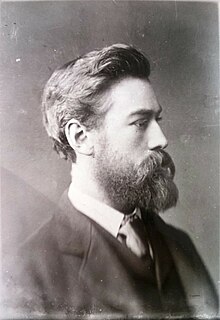
Arthur Silver (1853–1896) was a designer and founder of the Silver Studio. He was born in Reading in 1853. His grandfather had been in the cabinet-making business and his father, James Silver, was an upholsterer.

Walter Percival Starmer (1877-1961) was an English artist, cartoonist, muralist, and stained glass designer.
Audrey Levy is a British artist and textile designer.
References
- 1 2 3 Bose, K. S.; Sarma, R. H. (27 October 1975). "Laurence Scarfe (1914-1993)". University of Brighton College of Arts and Humanities. Retrieved 26 February 2019.
- 1 2 Arts.Brighton.ac.uk
- ↑ Warwick.ac.uk
- ↑ "Laurence Scarf". Arcadja. Retrieved 1 May 2019.
- ↑ "Pattern design with vertical lines and red, yellow, white and blue triangles". Museum of Domestic Descign and Agriculture. Middlesex University . Retrieved 11 May 2019.
- ↑ "Red and white pattern design". Museum of Domestic Descign and Agriculture. Middlesex University . Retrieved 11 May 2019.